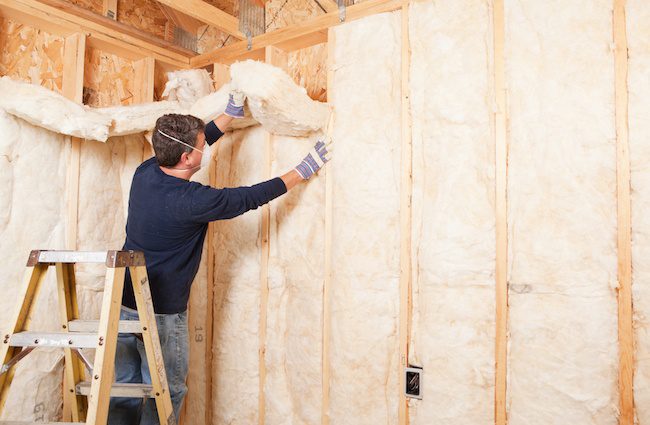How To Opt For Noise Control in Buildings
How can Noise Affect Us?
Noise is a health issue that has just recently been recognized. Invisible to the naked eye, noise pollution threatens millions of people every day. It can take numerous forms, ranging from raucous rock concerts to heavy highway traffic. In addition to raising blood pressure in individuals and disrupting wildlife’s daily habits, construction-related noise pollution also contributes to a wide range of health risks.
What’s the Solution?
Many of these problems might have been avoided if good acoustic design principles were followed throughout contemporary residential units’ planning and construction phases or using acoustic materials for sound proof insulation. This leads to the necessity of noise control in buildings.


Fig 1: Sound insulation between rooms
Courtesy: Pricewise Insulation
Through noise control, workers are protected from harmful noise exposure. These solutions are unlikely to eradicate noise on-site completely, but they will help mitigate the negative effects of excessive noise. If building site noise can be reduced even by a few decibels, this can make a significant difference in hearing.
What are the Methods that you can Follow?
Some of the methods that you can follow are:
During Design
Considering noise control or sound proof insulation in buildings throughout a project’s design phase is an excellent technique to decrease noise exposure. For this, equipment that minimizes noise levels can be selected, and design defects that can magnify noise can be eliminated. Also, a certificate of occupancy may be awarded only if the building has been tested in the field by the local building inspector.
The contractor and the real estate agent should be able to answer any questions you may have about sound isolation in a newly constructed home or a unit that you are considering purchasing. In order for a building to be code-compliant, it must be constructed in accordance with all applicable laws and regulations.
Using Sound Absorbing Materials
The use of sound-absorbing or acoustic materials helps reduce construction noise. Objects like metal, wood, and concrete are sound-reflective materials. They are often used for sound absorption due to their great performance and inexpensive costs, such as mineral wool or glass wool. Sound reverberation can be minimized by utilizing these materials on the floor, ceiling, and walls. Also, diffuse-field sound absorption is extremely high for these materials at mid and high frequencies.
Using Acoustics Blockers
Acoustic barriers prevent noise propagation through the material and reaching the other side of an equipment enclosure. In contrast, absorbers minimize the quantity of sound bouncing off a hard surface and propagating through the air, thus facilitating sound proof insulation.
There are many benefits to using barrier composites, such as preventing sound leakage from reaching the machine operator cab by covering control lever bases. Polyether Foam AF-021 is one such acoustic absorber often used in engine compartments to reduce airborne noise and absorb sound waves to lessen the amount of airborne noise.
How to Control Noise after Construction?
If it’s too late for you to opt for noise control in the construction stage, then also you can rectify the problem after construction. However, it’s best to rectify this in the construction stage. Some of the solutions are:
Through Windows
Wooden shims are commonly used to ensure the window is plumb and level when fitted into a wall opening. Before the window casings are placed, the interior areas between the frame and the wall must be insulated and sealed. Place your ear close to the frame and listen to see if the sound leakage was done appropriately. After removing the casing and insulating and caulking any holes that may be present, you should be able to hear a difference in sound.
- Through Ceiling
Perforated panels buried inside your false ceiling can help reduce noise transfer from the above flat. The sound waves are absorbed and limited in transmission by these sheets. Similarly, you can cover your walls with a few centimeters of these sheets. Consider using high-quality acoustic ceiling and wall materials if you want a polished look.
Conclusion
By eliminating the source of noise as much as possible, exchanging it with a quieter one like using acoustic materials, making engineering adjustments, putting administrative controls in place, and noise exposure can be minimized. The greatest strategy to reduce noise exposure is to design it from the beginning of the process. Avoid design errors that could exacerbate noise in new installations, and choose equipment with a low noise level in mind while procuring.
References
- Desk, Urban Company. “How to Make Your Home Quieter: A Guide to Reducing Noise – The Urban Guide.” How to Make Your Home Quieter: A Guide to Reducing Noise – The Urban Guide, www.urbancompany.com, 16 Jan. 2018, https://www.urbancompany.com/blog/interiors/how-to-make-your-home-quieter-a-guide-to-reducing-noise/.
- “Noise – Control Measures : OSH Answers.” Noise – Control Measures : OSH Answers, www.ccohs.ca, 16 June 2022, https://www.ccohs.ca/oshanswers/phys_agents/noise_control.html.
- “Why Is Noise Reduction Necessary in Construction Equipment? – Technicon Acoustics.” Technicon Acoustics, www.techniconacoustics.com, 5 Mar. 2020, https://www.techniconacoustics.com/blog/why-noise-reduction-necessary-construction-equipment/.
- , BigRentz. “How to Prevent Noise Pollution in Construction | BigRentz.” How to Prevent Noise Pollution in Construction | BigRentz, www.bigrentz.com, 21 May 2021, https://www.bigrentz.com/blog/how-to-prevent-noise-pollution.
- “Noise Control in Multi-Family Residential Buildings | ASI.” Acoustical Surfaces, www.acousticalsurfaces.com, https://www.acousticalsurfaces.com/soundproofing_tips/html/multi_familybuild.htm. Accessed 16 June 2022.
- Azimi, Mariam. “Noise Reduction in Buildings Using Sound Absorbing Materials.” OMICS International, www.omicsonline.org, https://www.omicsonline.org/open-access/noise-reduction-in-buildings-using-sound-absorbing-materials-2168-9717-1000211.php?aid=93322. Accessed 16 June 2022.






